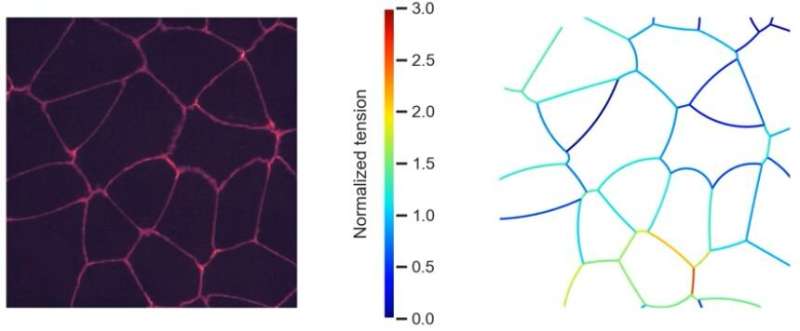Measuring cell-cell forces using snapshots from time-lapse videos of cells

Researchers at the University of California San Diego and the Allen Institute of Cell Science have developed a new computational method that can measure the forces cells exert on each other by analyzing time-lapse videos of cell colonies. The method could enable researchers to gain fundamental insights into what role intercellular forces play in cellular biology and how they differ in healthy and diseased states.
The forces that cells generate are of interest to researchers because they drive and regulate various processes in cell and tissue development. Information about these forces provides a framework for engineering artificial tissues and understanding how cancer cells develop and spread.
However, measuring intercellular forces has been an ongoing technical challenge in the field. Many existing techniques are invasive—they require physical intervention and can alter cell behavior after taking measurements.
In this study, researchers developed a way to measure intercellular forces without disturbing the activity of cell colonies. The findings were published Nov. 5 in Biophysical Journal.
UC San Diego mechanical engineering professor Padmini Rangamani, her Ph.D. student and first author of the paper Ritvik Vasan and their collaborators, Dave Williams and Molly Maleckar at the Allen Institute, developed the new approach. Their computational method analyzes microscopy images taken from videos of cell colonies, uses information from previous frames in the video to inform estimations in subsequent frames, and then computes the cell-cell forces. The method combines biophysical modeling from first-principles (Young's Laplace Law for the shape-tension relationship) with data-driven modeling using cell shapes from microscopy movies.
The team hopes that this will be a valuable data analysis tool for researchers in the biophysics community.
More information: "DLITE uses cell-cell interface movement to better infer cell-cell tensions."Biophysical Journal (2019).
Journal information: Biophysical Journal
Provided by University of California - San Diego



















